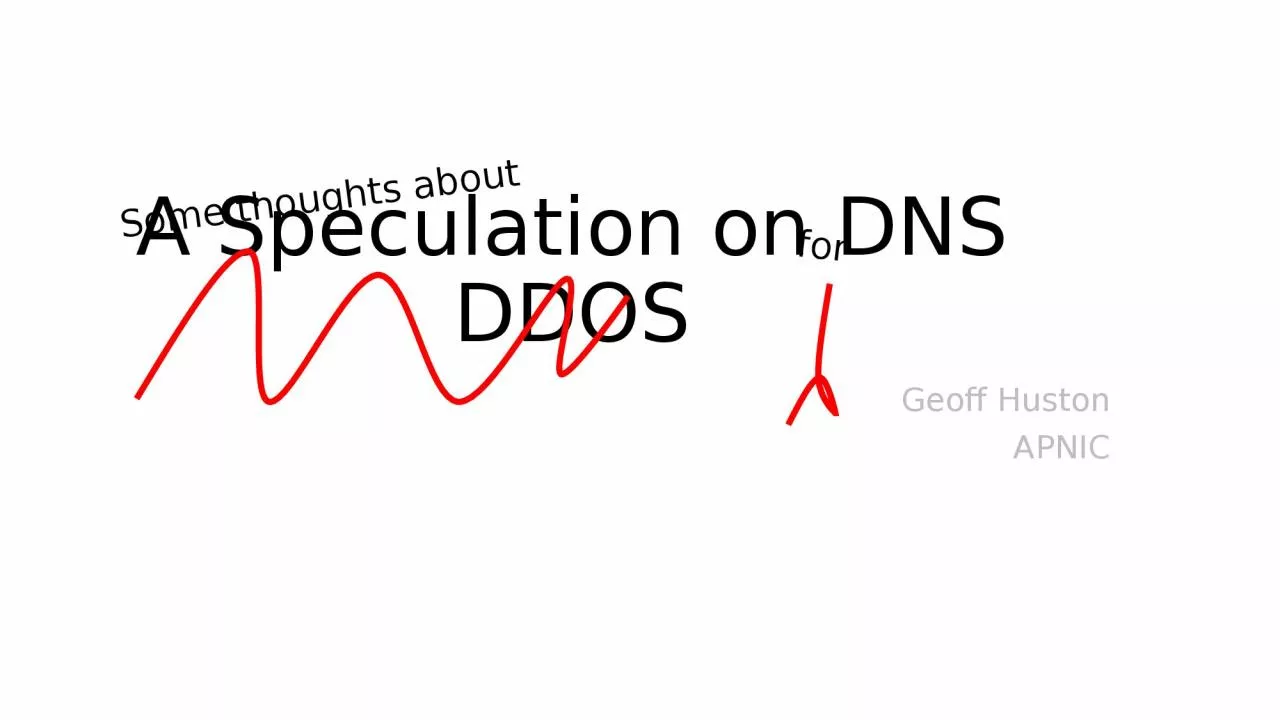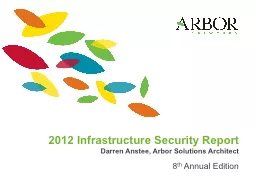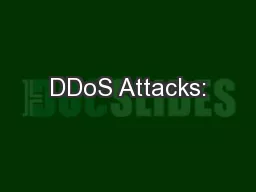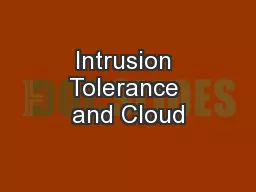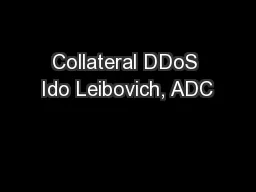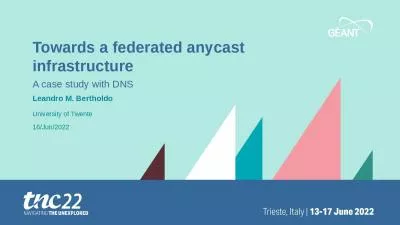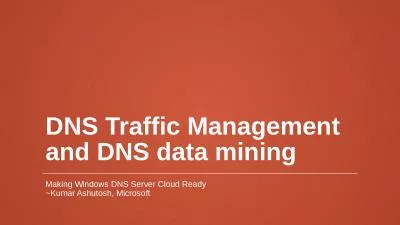PPT-A Speculation on DNS DDOS
Author : elizabeth | Published Date : 2024-02-09
Geoff Huston APNIC Some thoughts about for Well guess from the snippets that have been released It was a Mirai attack It used a compromised device collection
Presentation Embed Code
Download Presentation
Download Presentation The PPT/PDF document "A Speculation on DNS DDOS" is the property of its rightful owner. Permission is granted to download and print the materials on this website for personal, non-commercial use only, and to display it on your personal computer provided you do not modify the materials and that you retain all copyright notices contained in the materials. By downloading content from our website, you accept the terms of this agreement.
A Speculation on DNS DDOS: Transcript
Download Rules Of Document
"A Speculation on DNS DDOS"The content belongs to its owner. You may download and print it for personal use, without modification, and keep all copyright notices. By downloading, you agree to these terms.
Related Documents

